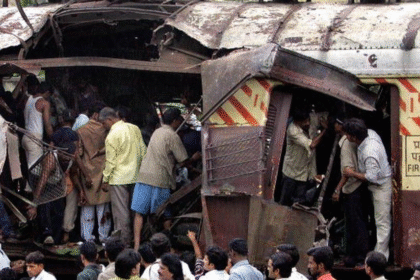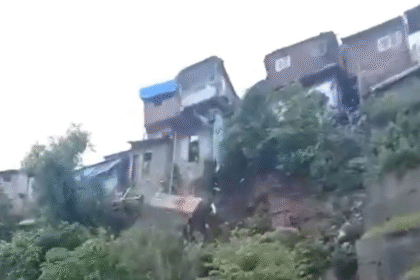Indians Returning From Iran to Jammu and Kashmir Face Harsh Conditions, Omar Abdullah Demands Action
In the wake of the escalating Iran-Israel conflict, the Indian government initiated emergency evacuation operations to bring home Indian nationals stranded in Iran, including a significant number of students and working professionals. While the Ministry of External Affairs and Indian diplomatic missions earned praise for their swift coordination, serious concerns have emerged about the subsequent treatment of evacuees once they arrived on Indian soil, particularly in Jammu and Kashmir.
Former Chief Minister Omar Abdullah has criticized the authorities over the inadequate arrangements for transporting returnees from Srinagar airport to their hometowns. Reports of poorly maintained buses, lack of food and water, and no official assistance have sparked outrage among citizens and leaders alike. In Part 1 of our detailed investigative series, we delve into the sequence of events, the logistical failures, and the political response surrounding this critical humanitarian issue.
A Fraught Return From a Conflict Zone
The repatriation mission, codenamed “Operation Suraksha,” brought back hundreds of Indians from Iran, where missile strikes and air raids had left students in a state of fear and uncertainty. Many of them were from Jammu and Kashmir, studying medicine or working in cities like Tehran, Isfahan, and Mashhad. Most were flown into Mumbai, Delhi, and Srinagar as per regional distribution protocols.
Upon arrival at Srinagar airport, evacuees assumed they would be greeted by state or central officials with arrangements for transport and food. Instead, many found themselves ushered into rickety, overcrowded buses that hadn’t been serviced for months. Videos posted by students show broken windows, torn seat covers, and buses lacking basic ventilation.
Omar Abdullah’s Sharp Criticism
Omar Abdullah took to social media and public forums to express his displeasure. “We’re proud that our children are returning safely from a war zone, but shocked at how they’re being treated on their return. Why weren’t clean buses arranged? Why no welcome teams?” he asked, adding that such treatment was an insult to both the evacuees and the state’s dignity.
He further demanded an investigation into the allocation of state disaster relief funds and raised questions about accountability within the J&K Transport Department. “This isn’t a question of politics; it’s a question of humanity,” he asserted.
Firsthand Accounts From Returnees
Several returnees shared their experiences on social media and with local journalists. One student, Arooj from Anantnag, said, “We were on edge every night in Iran, thinking our building would be bombed. Finally, we got a flight to Srinagar, and when we landed, we thought we were safe. But the bus journey was like punishment. I vomited three times because the road was bumpy and the bus smelled of diesel.”
Another student, Mohsin from Baramulla, added, “We were ten hours in that bus without food or water. There was not even a bottle of mineral water provided. When we asked the driver, he said he had no orders to stop.”
Parents waiting to receive their children at regional drop-off points were equally outraged. Ghulam Nabi, father of a returning student, asked, “Is this how you treat children coming back from a war-torn place? What message are we sending to the world?”
Lack of Coordination Among Authorities
Sources within the administration confirmed that while the evacuation was well-coordinated internationally, the post-arrival plan was severely lacking. An official from the Disaster Management Department, speaking anonymously, admitted, “There was no specific fund earmarked for reception and local transport. The orders came suddenly, and the Transport Department was told to use available buses, even if in poor condition.”
The absence of coordination between the airport authority, local police, and the transport agency meant that many buses arrived late and were not inspected before deployment. In some cases, drivers were not even given route maps or contact numbers for local checkpoints.
Broader Implications
This logistical oversight raises important questions about India’s domestic readiness to handle evacuees in times of international crisis. While the central government often emphasizes its efficiency in rescue operations abroad, the treatment of those returnees once home can often negate those efforts.
Analysts point out that this isn’t the first time such lapses have occurred. Similar criticism followed the Vande Bharat flights during the COVID-19 pandemic, where passengers complained of lack of basic amenities during domestic transit.
The issue also touches upon the center-state dynamic in a politically sensitive region like Jammu and Kashmir. While the evacuation was centrally funded and organized, the execution of local responsibilities like transport and food was left to the state authorities.
Conclusion
The safe return of Indian nationals from Iran should have been a moment of national relief and unity. Instead, it has turned into a flashpoint highlighting bureaucratic inefficiency, political negligence, and a lack of empathetic governance.
As Omar Abdullah and other leaders continue to push for accountability, Part 2 of our series will explore the responses from the Ministry of External Affairs, insights from logistical planners, and what steps can be taken to ensure such a mishandling doesn’t recur in future evacuations.
Ministry of External Affairs: Silent or Unaware?
Following the criticism from Omar Abdullah and mounting public outrage, questions have been raised about the role of the Ministry of External Affairs (MEA) in ensuring holistic support for evacuees—not just during international transit, but also upon their return.
Despite multiple media inquiries, MEA officials offered only brief responses, citing that the repatriation efforts were successfully completed and that “local arrangements” were under the purview of state administrations. This bureaucratic deflection, however, did not go unnoticed. Critics argue that if the central government can orchestrate high-stakes evacuations from conflict zones like Ukraine or Iran, surely it can mandate minimum standards for transportation, health care, and basic dignity once returnees arrive.
Voices From the Ground: Bureaucracy vs. Humanity
Transport officials in Jammu and Kashmir, speaking off the record, described being given last-minute orders to “arrange something quickly” with no budgetary or logistical assistance. One junior officer noted, “We didn’t even know the exact headcount until the morning of their arrival. The crisis was passed down the chain without a proper SOP.”
Such administrative inertia, experts say, reflects a deeper systemic issue in disaster response planning. Dr. Prakash Bhatia, a logistics expert who worked on Operation Rahat in 2015, emphasized, “Evacuations don’t end when the flight lands. Evacuee rehabilitation should be baked into national SOPs with clear coordination between ministries, local governance, and civil society groups.”
Students, meanwhile, continued sharing their plight online, drawing both sympathy and outrage. Hashtags like #RespectReturnees and #EvacuationNeglect began trending across social media platforms, with activists and youth groups organizing peaceful candle marches demanding better treatment for evacuees.
Legal and Policy Blind Spots
India does not currently have a unified legal framework governing post-evacuation domestic protocols. Unlike disaster management plans under the National Disaster Management Authority (NDMA), which mostly cater to domestic emergencies, international evacuation missions rely on ad hoc coordination between the MEA, Ministry of Civil Aviation, and occasionally, the Armed Forces.
Legal experts are now calling for amendments to the Disaster Management Act or a new legislation altogether—one that clearly outlines protocols for post-arrival care, mandatory infrastructure standards, and punitive accountability for lapses.
Public interest litigation (PIL) has also been filed in the Jammu and Kashmir High Court demanding a judicial review of the returnees’ treatment. The petition, filed by a local NGO, seeks court-monitored guidelines for future evacuations.
Political Fallout and Strategic Implications
While the humanitarian angle has rightly taken center stage, the political ramifications of the incident are equally significant. Jammu and Kashmir, already grappling with socio-political complexities, remains sensitive to any perceived central neglect. Political analysts warn that events like these can stoke deeper alienation and widen the trust deficit.
Omar Abdullah’s vocal criticism may also spark further demands for greater autonomy in regional disaster preparedness. In an interview, he said, “This is not just mismanagement—it’s a symptom of how disconnected some parts of the system are from the lived realities of our people.”
BJP representatives, however, pushed back, stating that “blame games” during times of national crisis only serve to polarize. A party spokesperson said, “Let us not forget that these students are back safe because of swift central action. The focus should now be on resolving transport issues, not politicizing it.”
Yet, for those who endured a harrowing journey from bomb shelters in Tehran to diesel-choked buses in Srinagar, the debate seems academic. For them, the gap between central policy and local execution was not just visible—it was painful.
Way Forward: What Needs to Change?
Experts across sectors are proposing several urgent reforms:
- Standardized Evacuee Reception Protocols: Mandated coordination teams at all airports receiving evacuees, with pre-arranged transport, food, water, and medical kits.
- State-Center Emergency Linkages: Real-time resource mobilization supported by central funds but executed by local units with clear communication channels.
- Psychosocial Support Units: Many returnees suffer psychological trauma from war zones. Mobile counseling teams and trauma kits should be made mandatory.
- Technology-Driven Tracking: A single digital dashboard accessible by ministries and local authorities that tracks returnees and offers live updates to family members.
- Training and Drills: Like disaster drills for earthquakes or fires, civil servants across levels should undergo routine training in handling evacuees.
As the second installment of this special report concludes, it is clear that the incident involving Indian students returning from Iran exposes critical flaws—not just in logistics, but in empathy, foresight, and governance.
While their rescue from Iran deserves applause, it is the failure on Indian soil that has sparked outrage and reflection. Whether these returnees become mere footnotes in a news cycle or catalysts for a more humane and systematic response depends on how seriously both the center and states treat this wake-up call
Also Read : Mumbai Rains LIVE Updates: City Braces for Moderate to Intense Rainfall in Next 4 Hours, Says IMD








